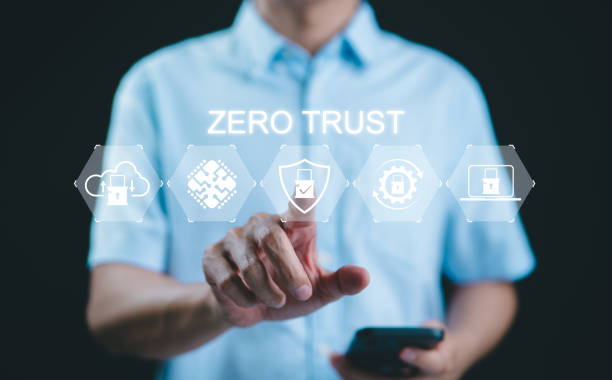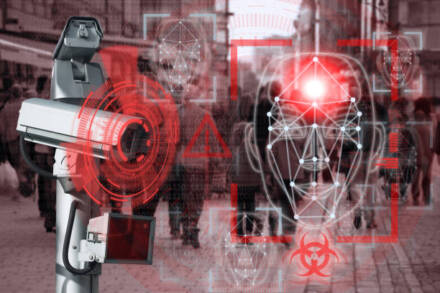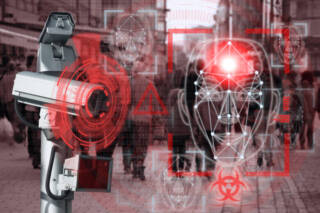As traditional perimeter fences give way to more sophisticated cyber threats, they slowly become irrelevant. In 2025, Zero Trust Security is no longer a trend—it’s a prerequisite. Security Operations Centers (SOCs), especially those leveraging managed SOC services, need to untether themselves from the preconceptions of the past. Adopting a Zero Trust approach has emerged as an urgent priority to address one of cybersecurity’s toughest challenges.
This Article explains the importance of Zero Trust Security in today’s SOC strategic decisions, its operational implications, and the measures organizations need to undertake to implement Zero Trust tenets to their structures.
What is Zero Trust Security?
“Never trust, always verify” best illustrates the deceptively simplistic principle of Zero Trust and serves as a guiding quote. This model of cybersecurity assumes that no user, device, or application is safe by default even if they are inside the corporate network.
- The required Zero Trust actions are:
- Continuous authentication and authorization
- Activity monitoring in real time
- Apply least privilege access controls
- Micro-segmentation of networks
These requirements stand in sharp contrast to the simplistic paradigms of the past, which automatically trusted users and devices after a perimeter check.
What Responsible Zero Trust Cybersecurity in 2025 Looks Like.
Every shift in approach either comes from innovation or the need to address one or several real-world problems.
- Hybrid Work is Here to Stay.
Modern employees access sensitive business-related systems from virtually anywhere. The previous coffee-shop option has morphed into remote workplaces, allowing access via mobile devices. Static network perimeters do not exist anymore. As borders and confines are removed, perimeter-based defenses starting from basics, are becoming redundant.
- Proliferation of Cloud and SaaS Services.
Data and workloads have also been more decentralized due to easily accessible cloud platforms and third-party services. Rigid centralized security is becoming outdated as the geographical control of data is needed to ensure visibility at all times. Modern providers offering Los Angeles cloud solutions help organizations stay secure by supporting localized compliance, optimizing cloud infrastructure, and enabling flexible, scalable environments. One can no longer place guard at a single doorway and expect to regulate all entry and exit.
- Rising Insider Threats
Zero Trust models assume that every user is at least partially compromised on their end. This calls for stringent verification to all access gateways for interactions in various entry points as “Insider attacks” have rather become a huge risk.
- More Sophisticated Attacks.
Attackers have been consistently ignoring firewalls and breaching internally weak controls. Patterned enduring threats (APTs), lateral movement, and supply chain attacks are on the rise, showcasing the need for river-deep, mountain-wide, identity-centric defenses.
The SOC’s Role in Effective Implementation of Zero Trust
Responsible implementations of Zero Trust invariably becomes a multi-unit effort involving every IT branch such as Networking, Identity, Compliance, with multifunctional rely team members to enhance experience within the niche each system brings.
Below are the points highlighting how SOCs contribute to achieving success in a Zero Trust architecture:
- Ongoing Surveillance & Threat Detection
The basic principle of Zero Trust revolves around continuous verification. Zeros trusts SOC Tools like SIEMs, EDR, and UEBA are sustained by their ability to fetch log and monitor for deviant behaviors in real time.
- Response and Mitigation of the Incident
Responding to any incident consumes SOC resources, enforcing principles of Zero Trust means immediate access revocation, termination of endpoint control, and hand-over of such administrative privilege to SOC.
- Execution of Least Privileged Access
SOC analysts have to some level innovating and have embraced auditing the least privileged policies SOC has devised; ensuring that System and users are given the bare minimal access that they require.
- Incorporation of Identity into Security Workflows
With IAM Zero Trust principles impose heavy dependence. SOCs can append identity information to alert correlation and investigations to enhance accuracy.
Key SOCs Technologies for a Zero Trust Framework
The SOCs in 2025 fortify Zero Trust use SOCs with a mix of technologies designed to enhance visibility, control, and enforcement. Outlined below are the most notable ones:
Identity and Access Management (IAM)
Policies define limitations on resource accessibility. Multi-factor authentication (MFA), single sign-on (SSO), and conditional access policies have become prerequisites.
User and Entity Behavior Analytics (UEBA)
UEBA tools scrutinize user activity for anomalies such as users downloading large files at strange hours or logging in from multiple locations.
Micro-Segmentation
The micro-segmentation technique minimizes further lateral movements by dividing the network into smaller segments. If a section of the network is compromised, the threat cannot easily propagate.
Cloud Security Posture Management (CSPM)
While moving toward the cloud, SOCs apply CSPM tools to monitor cloud configurations in real-time and enforce the policies defined under the Zero Trust framework.
SIEM and SOAR Integration
SOCs receive a streamlined operational picture across the Zero Trust environment when SIEMs, which collect and centralize logs, and SOAR tools, which automate response, are used in conjunction with one another.
The SOC Challenges Under Zero Trust
The advantages of Zero Trust are plenty, but reaping its benefits comes with challenges, such as an:
Overly Flexible External Environment
Implementing a strict ZT policy becomes very difficult with hybrid IT infrastructures. Each cloud endpoint or legacy application may need individual treatment.
Change Management
A change in organizational culture is often required with a Zero Trust framework. Users will not appreciate the need to authenticate frequently or having access restricted. Persuasion and clear communication are essential.
Tool Synchronization
To retain visibility and enforcement as per a Zero Trust framework, SOCs are required to combine many security tools such as SIEM, SOAR, IAM, etc. This could be challenging from a technology perspective.
Workforce Expertise
Fulfilling the operational demands of a SOC with Zero Trust awareness necessitates cyber analysts who are specially trained in identity security, behavioral analytics, and cloud architectures.
Building a SOC for Zero Trust Compliance by 2025
For SOCs aiming to move towards the Zero Trust model, here’s a step-by-step guide:
- Deem Risk as Central
SOCs should allocate resources towards areas with the greatest risk. Zero Trust aims to mitigate risk, not lock everything down.
- Expand Protective Scope
Ensuring comprehensive visibility across users, networks, endpoints, and cloud services is critical in being able to protect.
- Enforce Policy Manually
Policies can be enforced automatically when responding to incidents. This can be done using SOAR tools. A Zero Trust framework relies on automated responsiveness.
- Interdepartmental Collaboration
Enforcement of Zero Trust needs more than SOC policy and design. Work closely with DevOps, IT, and compliance for contextual policy enforcement.
- Refine and Iterate
Constantly evaluate access controls, conduct table top exercises, and adjust approaches. The Zero Trust approach is evolutionary, not static.
Conclusion: The Future of Cyber Defense is Zero Trust
In 2025, Zero Trust Security is not just a ‘buzzword’ but the bedrock of resilient cyber defense. For SOCs, it represents an opportunity to reshape security operations as moving from reactive to proactive, or perimeter-centric to identity-centric, with the shift to Zero Trust.
By concentrating on visibility, verification, and least privilege, SOCs are able to better eliminate the threats and contain them as fast as possible, reduce the attack surfaces, as well as assist secure expansion from the cyber attack angles on today’s decentralized digital landscape.






